Discover The VBAC Link
The VBAC Link

The VBAC Link
Author: Meagan Heaton
Subscribed: 446Played: 27,522Subscribe
Share
© Copyright 2021 All rights reserved.
Description
Join us as we share VBAC birth stories to educate and inspire! We are a team of expert doulas trained in supporting VBAC, have had VBAC's of our own, and work extensively with VBAC women and their providers. We are here to provide detailed VBAC and Cesarean prevention stories and facts in a simple, consolidated format. When we were moms preparing to VBAC, it was stories and information like we will be sharing in this podcast that helped fine tune our intuition and build confidence in our birth preparation. We hope this does the same for you!
The purpose of this podcast is to educate and inform- it is not to replace advice from any qualified medical professional.
The purpose of this podcast is to educate and inform- it is not to replace advice from any qualified medical professional.
441 Episodes
Reverse
This Christmas Eve episode is something a little different and very special! For over 400 episodes, you’ve heard our founder, Meagan Heaton, encourage, educate, and validate women through all types of birth stories. Now, she’s slowing down and speaking that encouragement directly to YOU. This episode is just a warm moment to simply pause, breathe, and feel supported.This episode is for all women, in any season. Whether you are preparing for a VBAC, processing a CBAC, riding that healing birth high or struggling through postpartum, Meagan’s words are meant to meet you right where you are. She shares how much she loves this community and how deeply she believes in you. May you feel seen, held, and reminded that you are never alone. We are always cheering for you. The Ultimate VBAC Prep Course for ParentsOnline VBAC Doula TrainingSupport this podcast at — https://redcircle.com/the-vbac-link/donationsAdvertising Inquiries: https://redcircle.com/brands
Kela is an inspiring mama who joins us today sharing her HBA2C story! All three of Kela’s pregnancies were planned home births, yet her first two ended in cesarean after long labors labeled “failure to progress”, concerns of chorio, tachycardia, and fever. Though the odds were stacked against her, Kela never let go of the dreamy home birth she knew in her bones was possible. With the support of an incredibly skilled and VBAC-supportive midwife, Kela achieved an incredible home birth after two cesareans! This birth included over nine hours of pushing, continuity of care, and manual cervical scar tissue work during labor. Meagan and Kela dive into more details about cervical scar tissue, something that definitely isn’t talked about very much! Kela says, “I knew deep down I could have the vaginal birth I always desired. And I did. It was the farthest thing from easy, but I couldn’t have done it without my incredible midwife who owns In Due Season Birth Center. She specializes in VBACs and she believed in me the whole way.”Needed Website: Code VBAC for 20% OffThe Ultimate VBAC Prep Course for ParentsOnline VBAC Doula TrainingSupport this podcast at — https://redcircle.com/the-vbac-link/donationsAdvertising Inquiries: https://redcircle.com/brands
“Peace on earth begins with birth.”In this powerful episode, Meagan sits down with Anna Lundqvist, founder of Sacred Birth International. Anna is a seasoned midwife from Sweden whose work has evolved into educating birthing families, doulas, and birth professionals on how to protect birth as a sacred, primal, and physiological event. Drawing from years of attending births around the world, Anna now focuses on teaching how to reclaim the innate design of birth, preserve reverence throughout the process, and support mothers in advocating for their autonomy. Her philosophy is rooted deeply in trauma-informed care and physiological birth wisdom. Meagan and Anna let the conversation flow naturally as they dive into induction, cervical checks, trauma, and the harsh realities many families face within the medical system. Anna offers heartfelt insight on processing fears, discerning intuition from anxiety, and why she often encourages VBAC at home for those who feel aligned with that path. Thank you for joining us today, @sacredbirthinternational for a very special conversation!!Content warning: This episode includes frank discussion of birth after sexual abuse and trauma. Please listen with care.Needed Website: Code VBAC for 20% OffThe Ultimate VBAC Prep Course for ParentsOnline VBAC Doula TrainingSupport this podcast at — https://redcircle.com/the-vbac-link/donationsAdvertising Inquiries: https://redcircle.com/brands
Women of Strength, you won’t want to miss this one!!In today’s episode of The VBAC Link Podcast, we welcome Sarah, a mom of three boys, an active duty Air Force officer (AND a spouse to one as well!) about her incredible VBA2C during an overseas PCS move from South Korea to Florida. Sarah’s first birth was a c-section for breech presentation. Her second was a scheduled c-section timed around her husband’s deployment. Her third pregnancy brought navigating prenatal care in a foreign country, a huge move with two toddlers in tow, and the stress of finding a completely new birth team. After Sarah’s water broke unexpectedly at 37 weeks while visiting family in Kentucky, and with all their belongings either in Arizona or on a boat in the Pacific, she was induced so she could labor while a VBAC-supportive doctor was on call. After 11 hours on Pitocin, she delivered her baby vaginally, finished the move and arrived in Florida when her newborn was just one week old. Sarah & Meagan also share tips about using nitrous oxide in labor and important Tricare resources for military families. Though there were wild twists and turns, Sarah got her especially redemptive moment of being fully present for the moment she introduced her new baby to her other boys. We are so proud of you, Sarah!!Nitrous Oxide ArticleNeeded Website: Code VBAC for 20% OffThe Ultimate VBAC Prep Course for ParentsOnline VBAC Doula TrainingSupport this podcast at — https://redcircle.com/the-vbac-link/donationsAdvertising Inquiries: https://redcircle.com/brands
Catie, a pediatric physical therapist from Northern Kentucky, joins Meagan on the podcast today sharing her three birth stories– a vaginal delivery, c-section, and VBAC! Catie struggled with hyperemesis gravidarum (among other complications) during all three pregnancies but wasn’t officially given the diagnosis until she was hospitalized with her third. By that time, she had researched hard and was ready to proactively manage it, even though her doctor wasn’t up-to-date on all of the ways to do that. Catie shares what she did and how it made a world of difference for that third pregnancy.In regards to her births, Catie talks about her first induced vaginal birth, her long, traumatic second labor that ended in an urgent c-section, a PTSD diagnosis, and her healing VBAC that was medically induced at 37 weeks due to Cholestasis. After her traumatic second birth, Catie really fought for healing. Women of Strength, we cannot stress enough how important this is. Through EMDR, pelvic floor therapy, exercise, and more, Catie gained back the confidence and trust she needed in her body to absolutely rock her VBAC! ICP Care Cholestasis ArticleThe VBAC Link Blog: Kick CountsNeeded Website: Code VBAC for 20% OffThe Ultimate VBAC Prep Course for ParentsOnline VBAC Doula TrainingSupport this podcast at — https://redcircle.com/the-vbac-link/donationsAdvertising Inquiries: https://redcircle.com/brands
We are so excited to welcome back our favorite registered dietician and bestselling author, Lily Nichols! Lily is here to chat with us about her third book, Real Food for Fertility. She explains how while the title focuses on fertility, this book goes far beyond that, diving into how nutrition supports hormone health and overall well-being at every stage of life.Meagan and Lily talk about nutrition before pregnancy, during pregnancy, and even how diet can sometimes (but not always!) affect a baby’s size. Lily also shares her hopes for future research on nutrition recommendations and the important reminder that even small, consistent changes in how we eat can make a meaningful difference. It’s truly never too late to start.Is it Too Late to Make Nutrition Changes in Pregnancy?Needed Website: Code VBAC for 20% OffIs it Too Late to Make Nutrition Changes in Pregnancy?Institute for Prenatal Nutrition WebsiteLily’s BooksLily’s FreebiesLily’s InstagramNeeded Website: Code VBAC for 20% OffThe Ultimate VBAC Prep Course for ParentsOnline VBAC Doula TrainingSupport this podcast at — https://redcircle.com/the-vbac-link/donationsAdvertising Inquiries: https://redcircle.com/brands
Kari joins us today from Huntsville, Alabama sharing her story of two induced but very different births. Her first was an unplanned Cesarean after a 39-week induction and the second was a medically induced VBAC due to preeclampsia. With her second baby, Kari saw a new provider who was VBAC supportive, hired a doula, and went to a chiropractor. She also found out that she had a velamentous cord insertion and signs of preeclampsia. Although she was planning for a spontaneous, unmedicated labor, Kari was able to have an empowering experience with Pitocin, an epidural, a delivery, magnesium, a 3rd-degree tear, and a blood transfusion, Kari found deep healing and pride in her VBAC experience.She and Meagan talk about blood pressure numbers, preeclampsia, the ARRIVE study, how epidurals can help or hinder progress, and navigating the emotions that come when birth unfolds differently than planned. Kari reminds us that birth can be beautiful and healing no matter what twists and turns come about!The VBAC Link Blog: VBAC With PreeclampsiaACOG Article: Preeclampsia and Blood Pressure During PregnancyNeeded Website: Code VBAC for 20% OffThe Ultimate VBAC Prep Course for ParentsOnline VBAC Doula TrainingSupport this podcast at — https://redcircle.com/the-vbac-link/donationsAdvertising Inquiries: https://redcircle.com/brands
“I want to be the light I wish I’d had in my darkest moments.” As we close out Pregnancy and Infant Loss Awareness Month, we are sharing Abbie’s two birth stories and honoring the memory of her firstborn, Rowan. Rowan was born prematurely via emergency Cesarean at 29 weeks during the height of COVID and passed several weeks later in the NICU. Abbie shares what it was like to come home from the hospital without a baby, the weight of overwhelming grief, and how self-care has helped her find healing. Her second pregnancy was labeled advanced maternal age and considered high risk. With the support of her care team, Abbie went on to have a healthy and empowering VBAC birth at 41 weeks that was filled with joy and deep healing.Professionally, Abbie is a massage therapist. She shares her tips around things like herbal support, massage therapy, and acupuncture. Abbie wants Women of Strength to know that acknowledging fear doesn’t mean we have to act on it. “Be afraid when you’re afraid, but do it anyway— whatever it is. Different baby, different birth.” Needed Website: Code VBAC for 20% OffThe Ultimate VBAC Prep Course for ParentsOnline VBAC Doula TrainingSupport this podcast at — https://redcircle.com/the-vbac-link/donationsAdvertising Inquiries: https://redcircle.com/brands
We are so excited to welcome back our friend, Rachel! She shared her first precipitous VBAC story all the way back in Episode 56. This time, she joins us again to talk about her next two VBACs— one of which included an unexpected diagnosis of gastroschisis and the other surprisingly beginning with PROM (premature rupture of membranes).Rachel opens up about navigating gastroschisis and how her care team supported her through it. Though she wasn’t sure she’d be able to have another vaginal birth, her provider actually encouraged it as the safest option for baby. Rachel achieved her second VBAC, but had to watch her baby be intubated immediately after birth, hemorrhaged, and was left alone when her husband went to be with their baby. She was thankful for her VBAC, but also deeply traumatized by the scary circumstances. With her fourth, Rachel decided to give birth in the hospital. She experienced PROM for the first time, back labor with an OP baby, and had her first sweet baby girl. From the prep before to the processing after, each of Rachel’s births were truly their own story. Women of Strength, you are strong enough to handle whatever birth throws your way, and Rachel is a beautiful example of just that.Gastroschisis ArticleEpisode 56 Rachel’s First VBAC StoryNeeded Website: Code VBAC for 20% OffThe Ultimate VBAC Prep Course for ParentsOnline VBAC Doula TrainingSupport this podcast at — https://redcircle.com/the-vbac-link/donationsAdvertising Inquiries: https://redcircle.com/brands
Today we’re revisiting one of our earliest episodes — Episode 13 Kelie’s VBA4C in Utah! Our audio quality has come a long way since those early days 😅, but Kelie’s story is still one of our most inspiring. “Kelie’s VBA4C section story is one of many awe-inspiring moments! She truly has been through it all with each of her cesareans and her VBAC. Her first baby was born weighing less than two pounds, and you will NEVER guess what her doctor did to her during her third C-section that leads to secondary infertility after her fourth birth. You will be laughing, crying, and gasping along with Julie as she reacts to the story. Then, we discuss VBAMC facts, information, and studies that you can find referenced on our blog at www.thevbaclink.com/blog • fb.me/thevbaclink for Facebook • @thevbaclink on Instagram • Follow and subscribe!!Please note, to get stories from all over the country and even other countries, we record using phone lines. For this reason, audio quality may vary between episodes and speakers.”VBAMC ArticleNeeded Website: Code VBAC for 20% OffThe Ultimate VBAC Prep Course for ParentsOnline VBAC Doula TrainingSupport this podcast at — https://redcircle.com/the-vbac-link/donationsAdvertising Inquiries: https://redcircle.com/brands
About her VBA2C, Chloe says, “I’ve been dreaming of my VBAC for 8 years. When my HBAC turned into a scheduled CBAC, I wasn’t even sure I’d get the option to have a VBA2C. It took a lot of planning & hard work & I knew as a first time labouring mom that it would be a longer labor but I completely underestimated just how long… Dreams came true New Years Eve as fireworks went off & my husband & I welcomed our daughter!”Chloe’s first birth was a scheduled Cesarean due to a partial placenta previa. For her second, she was planning an HBAC, but after going overdue with no signs of labor, concerns about her baby’s size, and a CPD diagnosis, she had another scheduled Cesarean. For her VBA2C baby, Chloe went all in. She connected with supportive providers, leaned into physical prep, and was so inspired from other women’s stories on The VBAC Link Podcast.Chloe labored hard for almost 3 days and was progressing veryyy slowly. Though it wasn’t what she thought she’d want at 3 cm, she got an epidural and AROM which ended up being incredibly helpful! Her midwife even said that she pushed as though she had delivered five babies. Take that, CPD! 💥After a long 65-hour labor, she pushed for just 15 minutes. We are so proud of you, Chloe!!Fear Release Activity VideoNeeded Website: Code VBAC for 20% OffThe Ultimate VBAC Prep Course for ParentsOnline VBAC Doula TrainingSupport this podcast at — https://redcircle.com/the-vbac-link/donationsAdvertising Inquiries: https://redcircle.com/brands
Women of Strength, we are making waves. We are so excited to be sharing our second Maternal Assisted Cesarean story on the podcast today! There are so many beautiful details within Brianna’s entire episode that you will not want to miss. In the small town of Crosby, Minnesota with a population of less than 3,000, Brianna was the first MAC under a brand-new policy. About her birth, she says: “While I didn’t get my VBAC, I did get a redemptive and healing birth. It just goes to show that acceptance, advocacy, and will power go a long way! I never thought I’d be happy to be writing my testimonial after experiencing all C-section births. My first birth was in August of 2020 where she was breech. It was in the week following her birth that I jumped into all things VBAC. My second birth was complicated by preeclampsia where what was supposed to be my redemptive VBAC turned CBAC when my blood pressure wouldn’t cooperate. This birth was traumatic and gave me more grief than my first birth experience. This leads me to my third and final birth story where I changed providers at 20 weeks. I was active and proactive in my own mental and physical health. I ultimately decided that I wanted a Maternal Assisted C-section after seeing Paige’s story on The VBAC Link. I thought it would be nearly impossible in small-town Minnesota, but ended up finding my voice and a provider who was extremely supportive. In May 2025, my daughter was born in my hands in the OR. While my grief of not getting a vaginal birth isn’t gone, it is much quieter. And despite not getting my VBAC experience, I have found extreme peace and healing in the autonomy and active participation of my maternal assisted cesarean. I encourage all women who are experiencing grief with their birthing experience to get educated, find a supportive provider, keep an open mind, and to not give up.”The VBAC Link Podcast Episode 357 Paige’s MACThe VBAC Link Podcast Episode 220 Dr. Natalie ElphinstoneHow to Cope When You Don’t Get Your VBACHow to Heal a Bad Birth BookNeeded Website: Code VBAC20 for 20% OffThe Ultimate VBAC Prep Course for ParentsOnline VBAC Doula TrainingSupport this podcast at — https://redcircle.com/the-vbac-link/donationsAdvertising Inquiries: https://redcircle.com/brands
Why is it that most avenues of healthcare delay preventative intervention, but when it comes to birth, there is so much more of a fear-based “just in case” mindset? Elisabeth, her doula (and our TVL team member!) Ashley Marg, and Julie Francom talk about how most of the time we can trust the physiological process of birth, yet providers often don’t. Elisabeth’s first birth was a whirlwind. After pushing at 9.5cm for 4 hours and feeling extremely exhausted with a swollen cervix, she consented to a Cesarean. But in the OR, her fetal ejection reflex kicked in and the doctor realized she was complete— minutes after the spinal block had already been given. She managed one more push, then the numbness took over and contractions stopped. Baby was too high for a vacuum, yet low enough that her doctor needed to push baby back up for the Cesarean. As you can imagine, her recovery was difficult, but her fire to educate herself all about birth was ignited. Elisabeth knew things could be different and fought for a redemptive VBAC! Discussion topics: Post-dates, evidence-based info, fetal ejection reflex, swollen cervix, induction, membrane sweep, artificial rupture of membranes, birth tub, preeclampsia misdiagnosis, spinal block, doulaNeeded Website: Code VBAC20 for 20% OffThe Ultimate VBAC Prep Course for ParentsOnline VBAC Doula TrainingSupport this podcast at — https://redcircle.com/the-vbac-link/donationsAdvertising Inquiries: https://redcircle.com/brands
Jennifer is a mom to three boys, each born in a different decade. Her first birth started out spontaneously but, after going to the hospital early and experiencing many interventions, ended in an emergency Cesarean under general anesthesia with an inverted T incision.For her second birth, Jennifer was excited to try for a VBAC but learned about her special scar and, trusting her doctor’s advice, scheduled a repeat Cesarean.By the time her third baby came along, Jennifer was older, wiser, and ready to fight for the birth she knew was possible. With insulin-controlled gestational diabetes, she went into labor spontaneously and even left one hospital AMA to find the support she needed. Her determination paid off when she went on to have her VBA2C!Jennifer’s story is full of faith, courage, and the reminder that instead of being fear-based, our decisions should be ones that bring us the most peace.Discussion Topics: gestational diabetes, VBAC, special scars, inverted T, repeat Cesarean, VBA2C, general anesthesia, spontaneous labor, AMA, changing providers, operative reports, faith affirmations, baby aspirin, fast dilation, fetal scalp electrode, tachycardia, fever, decels, advanced maternal age, pitocin, epiduralNeeded Website: Code VBAC20 for 20% OffThe Ultimate VBAC Prep Course for ParentsOnline VBAC Doula TrainingSupport this podcast at — https://redcircle.com/the-vbac-link/donationsAdvertising Inquiries: https://redcircle.com/brands
In today’s episode, Julie Francom talks with Diana, who shares her Cesarean and two very different VBAC stories. Diana’s journey began with a Cesarean birth including a velamentous cord insertion and a long, difficult recovery complicated by painful breastfeeding abscesses. For her second baby, she planned a home birth VBAC and euphorically welcomed her baby at home—only to need a hospital transfer for repair of a third-degree “starfish” tear. With her third, Diana prepared for another home birth and experienced her dream waterbirth VBAC with no tearing at all.While Diana’s third birth was physically healing, she faced unexpected emotional struggles afterward. She opens up about her experience with postpartum anxiety and depression, reminding us that healing is not only physical, but mental and emotional too.This episode brings important awareness to postpartum mental health and the resources available for support. Julie and Diana discuss the importance of community, professional help, and breaking the silence around postpartum mood disorders.If you had an unexpectedly tough recovery after your VBAC, know that you are not alone! Postpartum Support InternationalThe Postpartum Stress CenterPostpartum UniversityNeeded Website: Code VBAC20 for 20% OffThe Ultimate VBAC Prep Course for ParentsOnline VBAC Doula TrainingSupport this podcast at — https://redcircle.com/the-vbac-link/donationsAdvertising Inquiries: https://redcircle.com/brands
Did you know that The VBAC Link is made up of a whole team of VBAC doulas? Our Co-founder and Owner, Meagan Heaton, is joined today on the pod by TVL team members Lily (Director of Social Media & Community Engagement) and Paige (Production Admin & Community Liason) chatting all about questions we see from you in our community— topics like induction methods, providers, where to find info, prepping for VBAC, and the “why” behind everything we do!Needed Website: Code VBAC20 for 20% OffThe Ultimate VBAC Prep Course for ParentsOnline VBAC Doula TrainingSupport this podcast at — https://redcircle.com/the-vbac-link/donationsAdvertising Inquiries: https://redcircle.com/brands
Today we are revisiting another one of our favorite episodes! Episode 188 featured Lindsay’s amazing story of preparation and perseverance through doubt during her COVID VBAC.Lindsay’s first birth was a planned home birth which ultimately resulted in a hospital transfer and emergency C-section. She was left feeling unprepared and unheard and committed to fighting for a VBAC next time. Lindsay worked for months preparing for a VBAC both physically and emotionally. Once labor started, she was coping extremely well with her intense contractions. She arrived to the hospital at 10 centimeters, ready to have her baby!Until…her contractions completely stopped. Lindsay shares with us how she overcame ultimate doubt when pushing continued for over FOUR hours! Doubt can creep in at any time on your VBAC journey. Trust yourself and your preparation. Lean into your supportive birth team. We know you can do this!Needed Website: Code VBAC20 for 20% OffThe Ultimate VBAC Prep Course for ParentsOnline VBAC Doula TrainingSupport this podcast at — https://redcircle.com/the-vbac-link/donationsAdvertising Inquiries: https://redcircle.com/brands
In today’s episode, Meagan chats with our friend, Hannah, who is a mom to three little ones under the age of 4. Hannah has had two VBACs that were both unique in their own ways. Her first birth was an induction that led to an unplanned Cesarean. She was induced for the convenience of avoiding the upcoming holidays and to prevent her baby from getting too big if she chose to wait for spontaneous labor. While her Cesarean was straightforward and a positive birth, avoiding another tough recovery was the biggest reason why she wanted to have a VBAC.Hannah’s second birth included late onset gestational diabetes, PROM (premature rupture of membranes), and a VBAC with a 3rd-degree tear in every direction. With her third birth, she also had late onset gestational diabetes, spontaneous labor, a stall, a scary shoulder dystocia, and a VBAC with a 2nd-degree tear. Hannah says that even with the complications during her VBACs, she would choose those recoveries over her Cesarean recovery every time. We know the choice to VBAC is deeply personal, but an easier recovery is often a huge benefit to having a VBAC! Discussion Topics: shoulder dystocia, 18-month duration, close pregnancy duration, two VBAC stories, labor dystocia, calcium bicarbonate, TUMs, Pitocin, induction, uterine receptors, PROM (premature rupture of membranes), holidays, Cesarean recovery, perineal tears, late onset gestational diabetes, epidural, hospital VBAC, backup doula, unavailable provider, failure to progressNeeded Website: Code VBAC20 for 20% OffThe Ultimate VBAC Prep Course for ParentsOnline VBAC Doula TrainingSupport this podcast at — https://redcircle.com/the-vbac-link/donationsAdvertising Inquiries: https://redcircle.com/brands
Our co-founder, Julie Francom, hosts today’s episode with Heather from Sioux Falls, South Dakota. Heather talks today about her journey with IVF for her first pregnancy and conceiving spontaneously with her second. Heather’s first birth involved infertility, ovulation inducers, IUI’s (including a chemical pregnancy), solo appointments during COVID, and a C-section due to fetal tachycardia. She conceived naturally with her second, and also talks about the power of a chiropractor and the details of her positive VBAC induction at 39 weeks at only 1cm and 10% effaced due to gestational hypertension. Heather had a Foley bulb, Pitocin, lots of movement, Fentanyl, an epidural, peanut ball, AROM, pushed for a few hours, and met her sweet baby! The Fertility Docs Uncensored PodcastNeeded Website: Code VBAC20 for 20% OffThe Ultimate VBAC Prep Course for ParentsOnline VBAC Doula TrainingSupport this podcast at — https://redcircle.com/the-vbac-link/donationsAdvertising Inquiries: https://redcircle.com/brands
We are so excited to have Deb Flashenberg on the podcast today! She is the founder and director of the Prenatal Yoga Center in NYC. Along with being a prenatal yoga teacher, she is also a doula, Lamaze childbirth educator, Postpartum Corrective Exercise Specialist, Spinning Babies Parent Educator and mother of two. After a tough first birth experience, Deb became incredibly passionate about all things pelvic health. She started her own podcast, Yoga | Birth | Babies, and joins Meagan today to show us the benefits of 360-degree breathing, being comfortable with the uncomfortable, which positions to shoot for in the each stage of labor, and how to find “Goldilocks” within our pelvic floor!Breathe with Deb on YouTubeDeb’s WebsiteNeeded Website: Code VBAC20 for 20% OffCoterie Diapers - Use code VBAC20 for 20% OffThe Ultimate VBAC Prep Course for ParentsOnline VBAC Doula TrainingSupport this podcast at — https://redcircle.com/the-vbac-link/donationsAdvertising Inquiries: https://redcircle.com/brands



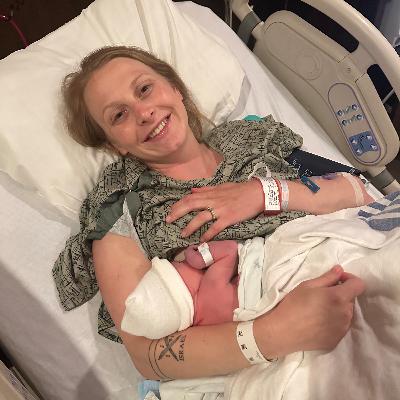
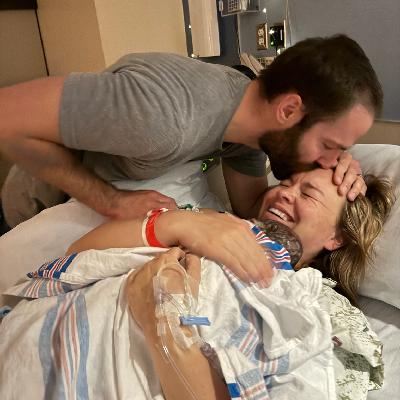
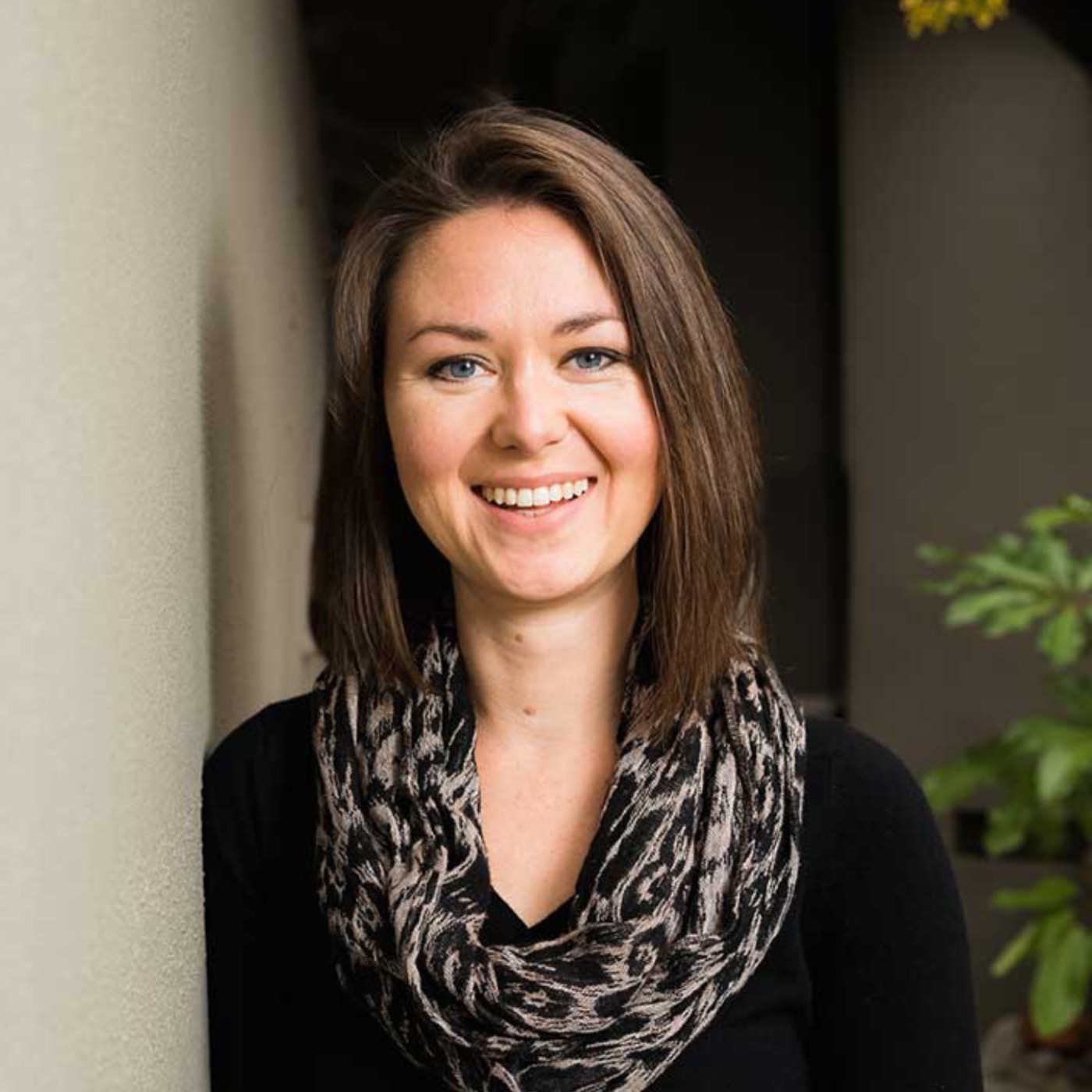
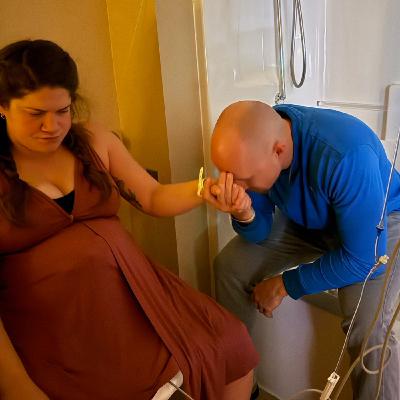

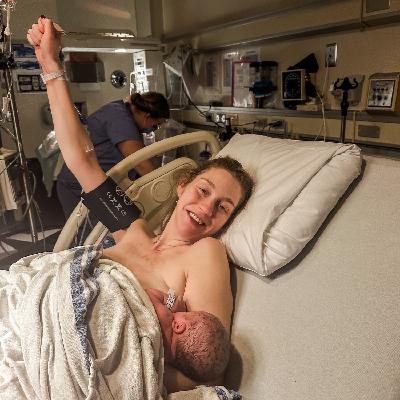
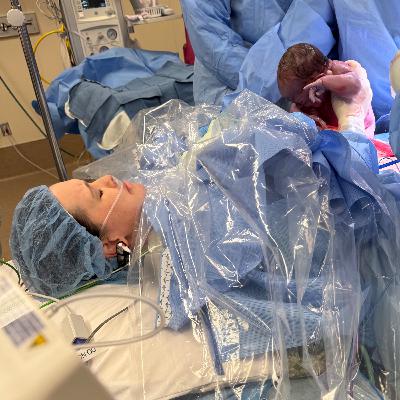
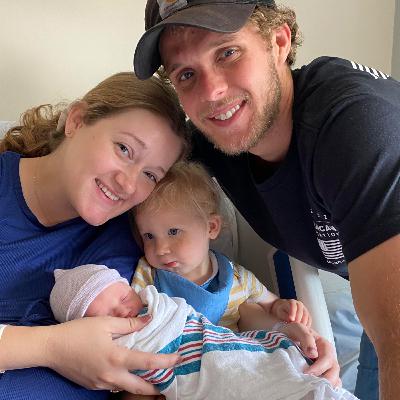
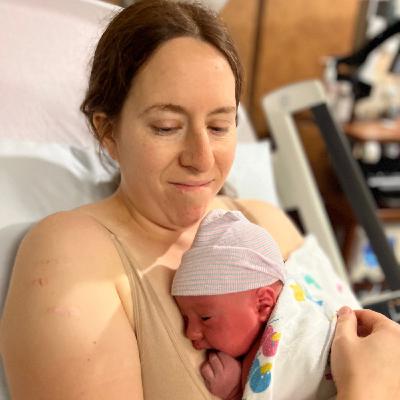
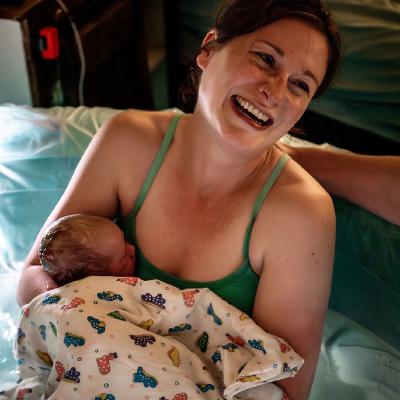
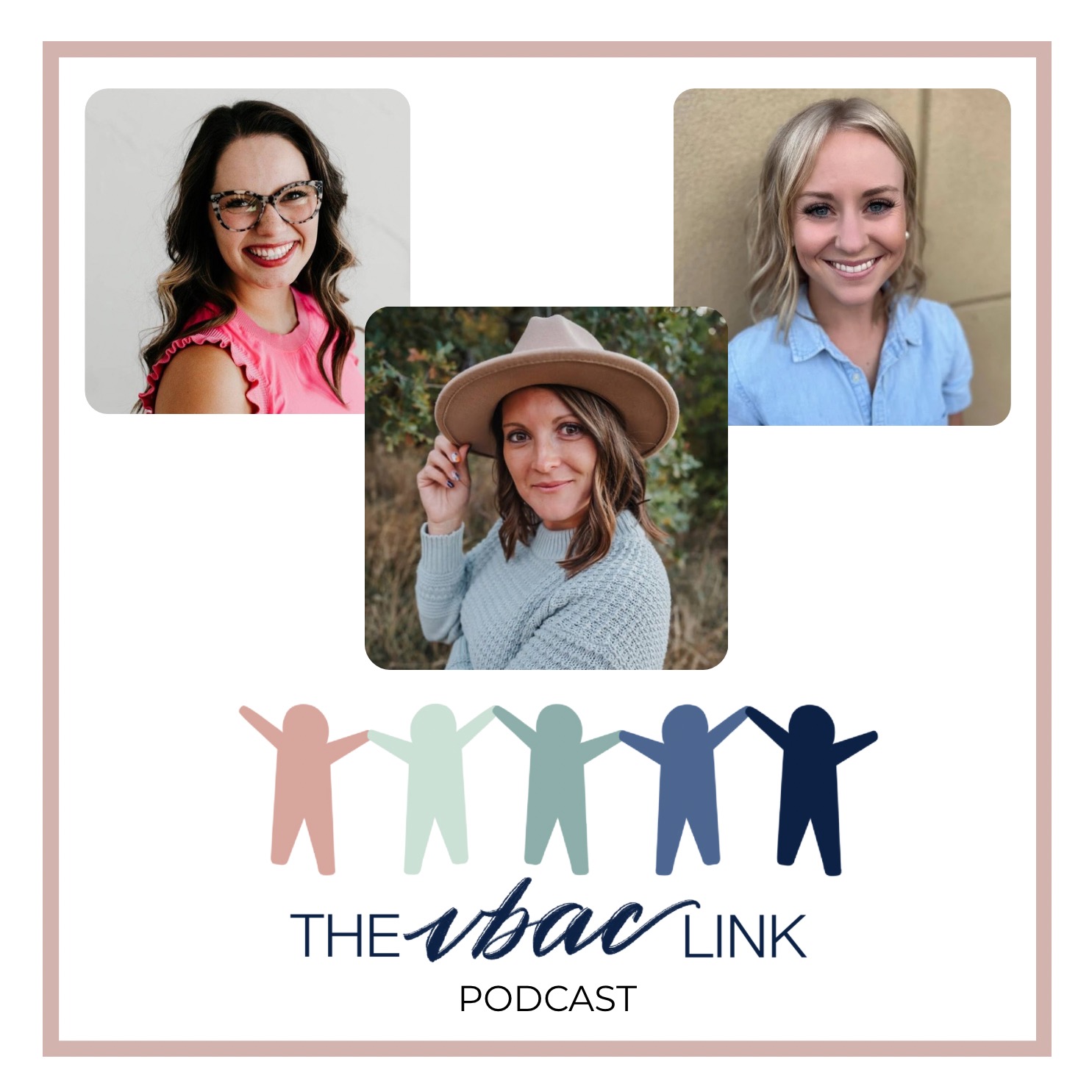
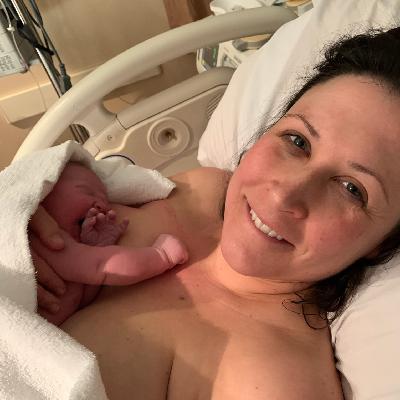
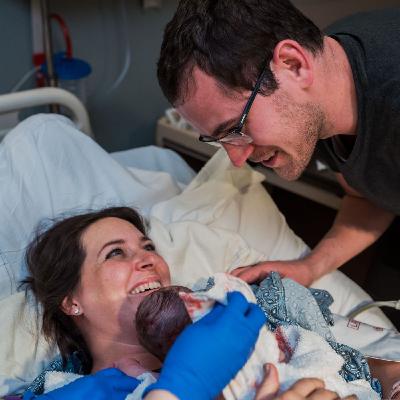

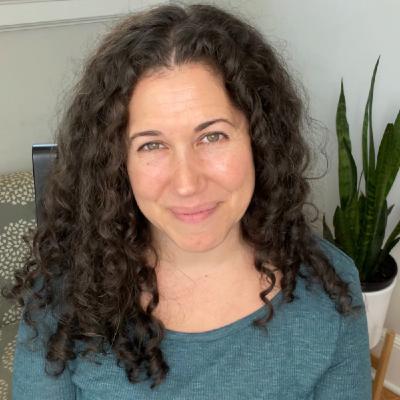



This episode is amazing!!! Thank you for this fabulous podcast!
Very nice article! I'm Preeti, I write for educational blogs. I make a collection of wonderful educational blogs from where I could take inspiration for writing. This article really inspires me though it is a little different from my domain but nonetheless it is a good writing. I sometime write for a education site blogs www.clearexam.ac.in Let me know your thoughts if I could contribute to your blog too.
love this! I cannot wait to hear what you've got in store!